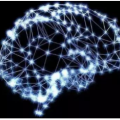The primary example of instance-based learning is the $k$-nearest neighbor rule (kNN), praised for its simplicity and the capacity to adapt to new unseen data and toss away old data. The main disadvantages often mentioned are the classification complexity, which is $O(n)$, and the estimation of the parameter $k$, the number of nearest neighbors to be used. The use of indexes at classification time lifts the former disadvantage, while there is no conclusive method for the latter. This paper presents a parameter-free instance-based learning algorithm using the {\em Half-Space Proximal} (HSP) graph. The HSP neighbors simultaneously possess proximity and variety concerning the center node. To classify a given query, we compute its HSP neighbors and apply a simple majority rule over them. In our experiments, the resulting classifier bettered $KNN$ for any $k$ in a battery of datasets. This improvement sticks even when applying weighted majority rules to both kNN and HSP classifiers. Surprisingly, when using a probabilistic index to approximate the HSP graph and consequently speeding-up the classification task, our method could {\em improve} its accuracy in stark contrast with the kNN classifier, which worsens with a probabilistic index.
翻译:以实例为基础的学习的主要例子是以美元为最近的邻居规则(kNN),它因其简洁和适应新的隐蔽数据的能力而得到称赞,并且将旧数据丢弃掉。经常提到的主要缺点是分类复杂性,即美元(n)美元,以及参数估算,即即将使用的近邻数(k美元)。在分类时使用指数提升了前一个劣势,而后一个则没有决定性的方法。本文件使用半空准星图(HSP)提出无参数的以实例为基础的学习算法。HSP邻居同时拥有中心节点的接近性和多样性。为了对给定的查询进行分类,我们计算其HSP邻居,并对它们适用简单多数规则。在我们的实验中,由此产生的分类者将任何1美元用于数据集组合中的任何美元提高为KNNNN美元。即使将加权多数规则适用于 kNN和HSP分类者,但这一改进的力度仍然会加强。令人惊讶的是,当使用一种稳定指数来接近HSP图表,从而加速其精确性,我们的方法可以改进了它的精确性。


